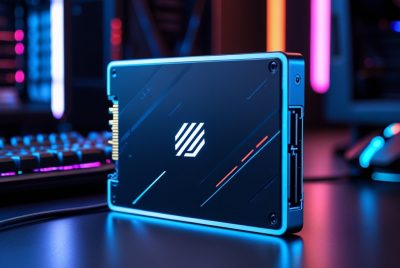Gaming Console VR: The Future of Interactive Entertainment
*We may earn a commission for purchases made using our links. Please see our disclosure to learn more.
Gaming Console VR: The Future of Immersive Entertainment
So what exactly is a Gaming Console VR and how are they different? Virtual Reality (VR) has transformed the gaming world. VR gaming consoles offer immersive experiences that place you directly into the game. Unlike traditional consoles, these systems use headsets and motion controllers to create a sense of being inside the game environment.
VR consoles come with many exciting features, but there are essential aspects to consider when choosing one. Pay attention to the headset’s resolution and field of view, as these impact the visual experience. Comfort and fit are crucial for prolonged use, so check the weight and design of the headset. Compatibility with various games and content is also important to get the most out of your system.
I researched and tested various gaming console VR systems to find the ones that deliver a truly immersive and enjoyable experience.
Best Gaming Console VRs
I’m excited to share my top picks for the best gaming console VRs on the market. These products offer immersive experiences and cutting-edge technology.
Meta Quest 2 128 GB
The Meta Quest 2 is an excellent VR headset that offers a stellar VR experience without needing a PC or console.
Pros
- Immersive 3D audio and hand tracking
- Expansive library of over 500 titles
- Wireless and highly portable
Cons
- Slightly pricey for some
- Some apps/games might be better suited for older audiences
- Battery life could be longer
Using the Meta Quest 2 feels like stepping into a different world. The 3D audio and hand tracking combine to make everything feel incredibly real. Setting it up was a breeze, and I didn’t need any extra equipment, which was a huge plus.
I’ve explored a variety of games and fitness apps, and the experience has been consistently smooth and engaging. The processor handles fast-paced action without any hiccups, making the gameplay enjoyable.
Though it’s a bit on the expensive side, the convenience and freedom of not being tethered to a PC or console make it worth it. Plus, being able to take it anywhere makes it incredibly versatile.
Meta Quest 3
Meta Quest 3 offers an incredible mixed reality experience with top-notch performance and visuals.
Pros
- Incredible graphics
- Mixed reality blends virtual and physical worlds
- Vast app library
Cons
- Short battery life
- Pricey
- Occasional tracking issues
I recently got my hands on the Meta Quest 3, and it’s a game-changer. The graphics are amazing, providing breathtaking visuals that make everything look so real. Mixed reality is another fantastic feature. It blends virtual elements into my actual surroundings, creating an immersive experience right in my living room.
The vast app library keeps me entertained for hours. With over 500 apps, there’s always something new to explore. From games to fitness apps, the variety is impressive. The included Asgard’s Wrath 2 game is a nice bonus.
Battery life could be better. I get around 2.2 hours of usage, which feels short for long gaming sessions. Luckily, there’s a Battery Saver mode to extend it. The price is steep, but the performance justifies it. Occasionally, I experience tracking issues, but nothing too major.
Overall, Meta Quest 3 is worth considering if you’re looking for a powerful mixed reality headset. The stunning visuals and wide range of apps make it a great choice for anyone who wants a top-tier VR experience.
PlayStation VR2
The PlayStation VR2 takes virtual reality gaming to a whole new level with its stunning visuals and intuitive controls.
Pros
- Immersive 4K HDR visuals
- Easy setup with a single cable
- Advanced sensory features
Cons
- Limited to PlayStation 5
- Can be pricey
- Some game compatibility issues
I recently got my hands on the PlayStation VR2 and was instantly impressed by the 4K HDR visuals. The graphics are incredibly sharp and vibrant, making every game world feel more lifelike. The headset features a 110º field of view which adds to the immersive experience, really drawing you into the game.
Setting up the PSVR2 was a breeze thanks to the single cable connection to the PS5. This ease of use is a big improvement from other VR systems I’ve tried. No more dealing with a mess of wires, which means you can start playing almost immediately.
The sensory features are another highlight. The eye tracking, 3D Audio, and headset feedback combine to offer a truly immersive gaming experience. The new controllers are also very intuitive and responsive, enhancing the overall feel of the game. These features really make the PSVR2 stand out.
On the downside, the system is limited to the PlayStation 5, so if you don’t own one, this could be a dealbreaker. Additionally, the price might be steep for some, but for the quality you’re getting, it’s worth considering. Some games also have compatibility issues which can be a bit of a letdown.
PlayStation VR2 See More Here
VITURE One XR/AR Glasses
If you want versatile and high-quality smart glasses for gaming and watching movies, these are a solid choice.
Pros
- Adjustable tint film for different light conditions
- Excellent sound quality with minimal noise leakage
- Compatible with a wide range of devices
Cons
- Some users find the screen blurry at the edges
- May not fit comfortably for everyone
- Occasional issues with the myopia adjustment feature
These XR/AR glasses from VITURE have a lot to offer. I found the adjustable tint film especially useful when shifting between different lighting environments, making the overall experience quite comfortable. The seamless support for various devices, including iPhones and gaming consoles, adds to their versatility.
The sound quality is impressive, thanks to the partnership with HARMAN. It really makes a difference when you’re fully immersed in a game or watching a movie, as the noise leakage is minimal. I could enjoy my content without disturbing people around me.
However, there are some drawbacks. The fit might not be ideal for everyone, and I noticed blurry edges on the screen from time to time. Also, the myopia adjustment didn’t always work perfectly for me. Despite these issues, the glasses still provide a premium experience that is worth considering.
Buying Guide for a Gaming Console VR
When choosing a VR gaming console, there are a few key features to consider.
Compatibility
Make sure the VR headset is compatible with your existing gaming console. Some VR systems only work with specific consoles, so double-check before making a purchase.
Display Quality
Look for resolution, refresh rate, and field of view. Higher resolution and refresh rates provide a more immersive experience. Field of view affects how wide the visual scene appears.
Comfort
Check the weight and adjustability of the VR headset. It should be comfortable for long periods.
Tracking
Good tracking is crucial for an immersive experience. Look for inside-out or outside-in tracking depending on your space and setup.
Audio Quality
Built-in audio or headphone compatibility can enhance the gaming experience. Look for VR headsets with 3D audio capabilities.
Controllers
Check the type and responsiveness of controllers. They should be comfortable and have intuitive button layouts.
Price
Finally, compare prices to find what fits your budget. Features and accessories can add to the cost, so prioritize what matters most to you.
Tips
- Try Before You Buy: If possible, test the VR headset at a store.
- Read Reviews: Check user reviews and ratings to see other people’s experiences.
- Warranty: Ensure it comes with a good warranty for peace of mind.
Frequently Asked Questions for Gaming Console VR
Many gamers are curious about VR headsets, system requirements, compatibility, and gameplay differences. Here’s what you need to know.
1. What are the system requirements for PlayStation VR?
To use PlayStation VR, you need a PlayStation 4 or PlayStation 5 console. You also need a PlayStation Camera and PlayStation Move controllers.
2. Can you play VR games on any gaming console?
No, VR games can only be played on consoles that support VR headsets. Examples include PlayStation VR for PS4 and PS5 or Oculus Rift for PCs.
3. What is the difference between standalone VR headsets and console-connected VR headsets?
Standalone VR headsets operate independently without the need for an external console or PC. Console-connected VR headsets, like PlayStation VR, require a compatible gaming console to function.
4. Which VR headset is compatible with the PS5?
The PlayStation VR (PSVR) is compatible with both the PS4 and PS5. Sony is also working on the next-gen PlayStation VR2 for the PS5, which is expected to offer improved features.
5. How do VR games differ from traditional video games in terms of gameplay?
VR games offer an immersive 3D experience. You can look around and interact with the virtual world more naturally. Traditional video games are played on a flat screen and usually use a controller for interactions.








